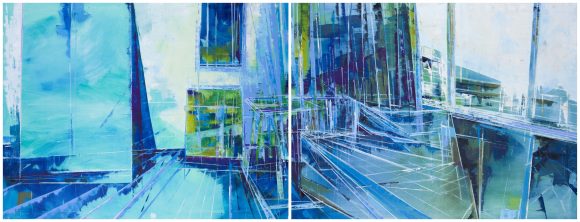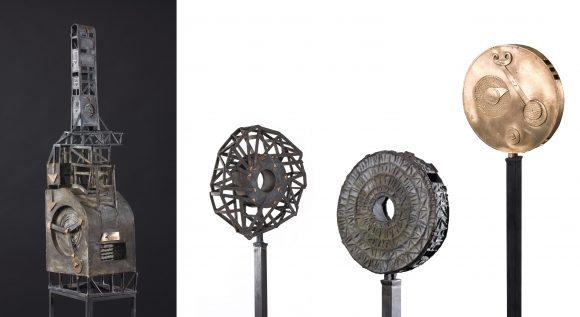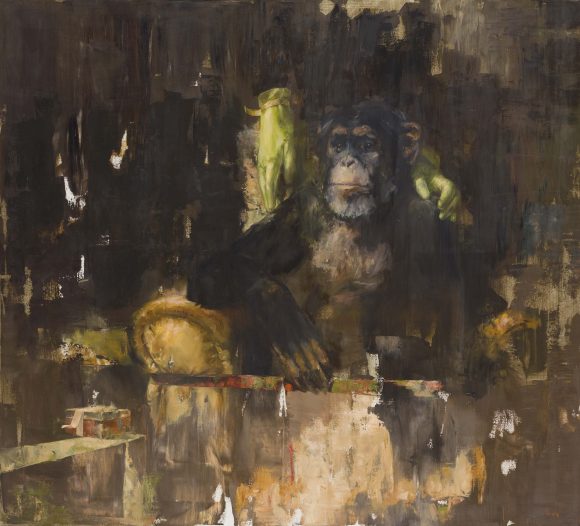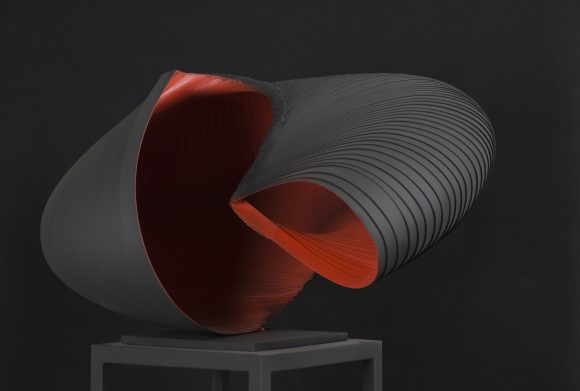A short interview with Ákos Bánki Esse painter can be seen here as part of our February online exhibition Perceptions 5 TACTILITY.
ART IS FUN… OUR GALLERY IS THE EXTENDED VERSION OF YOUR LIVING ROOM
Rovataink:
Tartalomjegyzék erről az oldalról:
ÁKOS BÁNKI ESSE TACTILITY INTERVIEW
TACTILITY coming soon
TACTILITY coming soon
TACTILITY coming soon
Archive
PERCEPTIONS 5
NONHUMAN
Criticism
Finissage / Attila Rajcsók & Ákos Bánki Esse
Róbert Csáki
Barna Imre Balázs / coming soon
In The Focus
In The Focus
In The Focus
In The Focus
In The Focus
Visszaugrás a navigációraAz oldal cikkei bevezetőkkel:
TACTILITY coming soon
The work of PAF painter can be seen here as part of our February online exhibition Perceptions 5 TACTILITY.
TACTILITY coming soon
The work of Attila Rajcsók sculptor can be seen here as part of our February online exhibition Perceptions 5 TACTILITY.
TACTILITY coming soon
József Zalakovács painter can be seen here as part of our February online exhibition Perceptions 5 TACTILITY.
Archive
Exhibitions:
1.) Berkes András festőművész 1996. április 12.
2.) Zámbó Kornél festőművész 1996. június 6.
3.) Garay János Ének-zenei Általános iskola 1996. szeptember 28.
4.) Fedinecz Atanáz festőművész 1996. augusztus 29.
5.) Nagy János festőművész 1996. október 3.
6.) Kiss Ilona képzőművész 1996. december 20.
7.) Kiss István szobrászművész 1997. március 4.
8.) Almási Anikó képzőművész 1997. május 29.
9.) d Farkas István szobrászművész 1997. június 26.
10.) Bozsó János festőművész 1997. október 2.
11.) Garay János Ének-zenei Általános Iskola 1997. november 3.
12.) Dévényi János ötvösművész 1997. november 13.
13.) Somogyi János festőművész 1998. február 11.
14.) Mihály Gábor szobrászművész 1998. április 30.
15.) Zala Tibor grafikusművész 1998. szeptember 25.
16.) Garay János Ének-zenei Általános Iskola 1998. október 10.
17.) Schéner Mihály festőművész 1998. november 25.
18.) Nagy Gábor festőművész 1999. január 14.
19.) Féner Tamás fotóművész 1999. március 18.
20.) Dienes Gábor festőművész és
Katona Zsuzsa szobrászművész 1999. április 29.
21.) Romvári József film díszlettervező,
Romvári János képzőművész és
Romvári Márton festőművész 1999. október 7.
22.) A Képzőművészet vadvirágai 1999. december 2.
23.) Eifert János fotóművész 2000. január 13.
24.) Szász Endre festőművész és
Hajdú Katalin festőművész 2000. február 17.
25.) Benedek György szobrászművész 2000. március 23.
26.) Simon Csilla fotóművész 2000. május 11.
27.) Gyémánt László festőművész 2000. október 11.
28.) Zórád Ernő grafikusművész 2000. november 23.
29.) Csáki Róbert festőművész 2001. január 25.
30.) Harasztÿ István szobrászművész és
Matzon Ákos festőművész 2001. március 22.
31.) Pogány Géza festőművész 2001. április 26.
32.) Juveníliák II. gyűjteményes 2001. június 14.
33.) Horváth Éva Mónika festőművész 2001. október 4.
34.) Fábián Évi fotóművész 2001. november 8.
35.) Fedinecz Atanáz / Fruci festőművész 2001. december 1.
36.) Iván Ildikó festőművész 2002. február 13.
37.) Fekete Tamás szobrászművész 2002. március 20.
38.) Hornyák Tamás festőművész 2002. április 25.
39.) Konkoly-Thege György fotóművész 2002. június 6.
40.) Kokas Ignác festőművész 2002. október 3.
41.) Balázs Imre Barna festőművész 2002. november 14.
42.) Paulikovics Iván szobrászművész 2003. január 16.
43.) Sváby Lajos festőművész 2003. április 17.
44.) Bukta Norbert festőművész 2003. május 29.
45.) Szutor László festőművész 2003. szeptember 28.
46.) Nádas Alexandra grafikusművész és
Nagy Gábor festőművész 2003. október 30.
47.) Gyémánt László festőművész 2003. november 27.
48.) Árvay Zolta festőművész 2004. február 12.
49.) Tenk László festőművész 2004. március 18.
50.) Kő Pál szobrászművész 2004. szeptember 16.
51.) Csáki Róbert festőművész 2004. október 21.
52.) Zala Tibor grafikusművész 2005. január 17.
53.) Lóránt Zsuzsa szobrászművész 2005. február 17.
54.) Ádám Zoltán festőművész 2005. április 7.
55.) Thury Levente gólem készítő 2005. május 12.
56.) Kocsis András Sándor 2005. június 16.
57.) Fekete Tamás szobrászművész és
Paulikovics Iván szobrászművész 2005. július 21.
58.) Kolumbán Zsuzsa babakészítő népi iparművész 2005. szeptember 1.
59.) Glanz Brigitta fotóművész 2005. szeptember 24.
60.) Bullás József festőművész 2005. október 6.
61.) Nádler István festőművész 2005. december 1.
62.) ifjú Palkó József szobrászművész 2006. január 19.
63.) Gáti Gábor szobrászművész 2006. február 16.
64.) Szűcs Attila festőművész 2006. március 23.
65.) Gerzson Pál festőművész 2006. április 20.
66.) Ezüst György festőművész 2006. május 17.
67.) Csík István festőművész 2006. szeptember 07.
68.) Fábián Évi fotóművész 2006. október 12.
69.) Pintér András Ferenc festőművész „frissen, üdén” 2006. november 23.
70.) Szabó György szobrászművész 2007. január 25.
71.) Kárpáti Éva festőművész 2007. március 08.
72.) Jovián György festőművész „Földképek” 2007. április 12.
73.) Csáki Róbert festőművész 2007. május 31.
74.) Balázs Imre Barna festőművész 2007. szeptember 27.
75.) Tenk László festőművész 2007. október 29.
76.) Zalakovács József festőművész „Megérzések” 2007. november 29.
77.) Keleti Éva fotóművész „Volt egyszer…” 2008. február 28.
78.) Balás Eszter szobrászművész „Él, élek” 2008. május 8.
79.) Dienes Gábor festőművész 2008. november 20.
80.) Csáki Róbert festőművész 2008. december
81.( Gyémánt László festőművész „Nagy utazás” 2009. április 23.
82.) Nagy Gábor festőművész 2009. június 19.
83.) Csík István festőművész „Válogatás az életműből” 2009. szeptember 10.
84.) Mata Attila szobrászművész „Stainless Steel” 2009. szeptember 24.
85.) Csáki Róbert – „Válogatás egy év munkáiból” 2009. november 12.
86.) Vagyóczky Károly festőművész, grafikus 2010. március 11.
87.) Zámbó Kornél festőművész 2010. május 13.
88.) Paulikovics Pál és Paulikovics Iván szobrászművész 2010. június 24.
89.) Benkő Sándor „Az idő fogságában” 2010. szeptember 9.
90.) Almási Anikó: In memoriam Almási Anikó 2011. március 22.
91.) Csáki Róbert – Tondók 2011. május 26.
92.) Incze Mózes festőművész 2011. november 16.
93.) Pintér András Ferenc festőművész 2012. március 21.
94.) Szabó György szobrászművész 2012. szeptember 27.
95.) Hermann Pedit festőművész 2012. november 9.
96.) Csáki Róbert festőművész 2012. december 3.
97.) Fehér László festőművész 2013. március 6.
98.) Percepciók 2013. szeptember 20.
99.) Gyémánt László – Nagy Boglárka festőművészek 2013. október 21.
100.) Csáki Róbert festőművész 2013. december 10.
101.) PAF – Pintér András Ferenc festőművész 2014. február 14.
102.) Art Salon Majális – BIB, Jász András, Rajcsók Attila 2014. május 14-16.
103.) Percepciók 2. 2014. szeptember 12.
104.) Rajcsók Attila szobrászművész „Időrétegek” 2014. októbert 14.
105.) Borbély László festőművész 2014. november 07.
106.) Incze Mózes festőművész „Folyamat” 2014. december 09.
107.) Időfonat – Rajcsók Attila és PAF 2015. február 18.
108.) Csík István festőművész 2015. március 12.
109.) Hencze Tamás festőművész 2015. április 23.
110.) Percepciók 3. 2015. szeptember 23.
111.) Balázs Imre Barna festőművész 2015. november 11.
112.) PAF – „Zúzott terek” 2016. február 11.
113.) Csáki Róbert „BLACK ROCOCO” 2016. április 29.
114.) Percepciók 4. – #artforsale 2016. szeptember 23.
115.) Zámbó Kornél – 5777 2016. november 14.
116.) Szabó György – Éjjeli bozótlakó titkos kertje 2016. november 17.
117.) Esse Bánki Ákos / Pop-up 2017. március 31.
118.) PAF / Pop-up 2017. április 21.
119.) Colin Foster – White 2017. május 18.
120.) Rajcsók Attila: A jövő emlékei / Pop-up 2017. szeptember 29.
121.) Ábel Tamás: Unequal Rainbow / Pop-up 2017. október 14.
122.) Zalakovács József és Borszéki Zita / Pop-up 2017. november 10.
123.) PAF / Pop-up 2017. november 20.
124.) Incze Mózes és Varga Melinda: Szinopszis 2017. december 02.
125.) Esse Bánki Ákos 2018. február 09.
126.) Szabó György: Holdfénygyűjtő 2018. április 19.
127.) Colin Foster, PAF, Valkó László 2018. május 25.
128.) Balázs Imre Barna 2018. szeptember 14.
129.) Csáki Róbert 2018. november 9.
130.) Mata Attila: Tér-Anyag / Pop-up 2019. február 22.
131.) Bánföldi Zoltán: Giovanni Risi kalandos élete 2019. március 08.
132.) PAF – F(R)ACTURE 2019. április 26.
133.) PAF – INSIDE OUT / Pop-up 2019.szeptember 27.
134.) Szabó György / Pop-up 2019. október 29.
135.) Esse Bánki Ákos és Rajcsók Attila 2019. november 29.
136.) „NONHUMAN „ 2020. február 21.
Kurátorok: Keresztury Dorka, Lak Róbert, Máté Zsófi
Művészek: Eiter Tamás, Fusz Mátyás, Klájó Adrián, Kovács Tibor,
Körei Sándor, Kuzma Eszter Júlia, Peternák Anna,
Szécsényi-Nagy Loránd, Vadászi Zoltán, Újházi Adrienn.
137.) Kecső Kristóf és Nagy Dániel TÉR/KÖZ 2020. március 20.
138.) Percepció 5. – Taktilitás / online 2021. február 19.
Külföldi kiállításaink:
- Ottimo, 2012 – PAF – Pintér András Ferenc
- St. Pölten, 2012 – Balázs Imre Barna
- Palais Pallfy, 2012 – PAF – Pintér András Ferenc
- Haus Wittgenstein, 2013. – Dialog I. Balázs Imre Barna, Csáki Róbert, PAF, Szabó György
- Galerie Eugen Lendl 2014 – Dialog II. – Balázs Imre Barna, Csáki Róbert, PAF
- Galerie 89, Párizs 2015 – Rajcsók Attila
„1mű 1mester” sorozat:
- Nagy Gábor – Tájmetszetek 2006. június 29.
- Fekete Tamás 2006. szeptember 1.
- Fekete Tamás és Paulikovics Iván 2007.
- Csáki Róbert 2008. április 10.
- Gyémánt László: Önarckép 2008. január 22.
- Gyémánt László festőművész 2010. november 26.
- Csáki Róbert – Tondók 2011. május 26.
- Rajcsók Attila – PAF „Időfonat” 2015. február 18.
- Csík István 2016. február 4.
- Gyémánt László 2016. október 27.
„IN FOCUS” sorozat:
- Zámbó Kornél – 5777 2016. november 5.
Tiszteletbeli tag:
1.) Daisaku IKEDA (Japán) 1999. július 27.
Születésnapi:
1.) Kokas Ignác festőművész 75. születésnap 2001. március 2.
Könyvbemutatók:
1.) Bernáth László: Tanuljunk könnyen, gyorsan újságot írni!
2.) Dr. Szendei Katalin: Gyógyszer a családban
3.) Varga Ilona: Hanglenyomatok (interjúkötet)
4.) Paulikovics Iván: Katalógus
5.) Somogyi János: Életmű katalógus
6.) Bőzsöny Ferenc: Aki a harangért szól…
7.) Bóta Gábor: Gyémántográfia
8.) Elvett Illúziók Drozdy Győző emlékiratai 2007.
9.) Tenk László festőművész életmű albuma 2007.
10.) Csáki Róbert életmű albuma 2008.
11.) Csík István: Válogatás az életműből 2009.
12.) Gyémánt László „Nagy utazás” 2009.
13.) Nagy Gábor festőművész jubileumi albuma 2009.
14.) Csáki Róbert: Válogatás egy év munkáiból” 2009.
15.) Zámbó Kornél festőművész albuma 2010.
16.) Paulikovics Pál üvegszobrász albuma 2010.
17.) Benkő Sándor: Az idő fogságában 2010.
18.) In memoriam Almási Anikó 2011.
19.) Incze Mózes 2011.
20.) PAF – Pintér András Ferenc / Kossuth Kiadó 2012.
21.) Szabó György / Kossuth Kiadó 2012.
22.) „Dialog” német (Haus Wittgenstein) 2013.
23.) Gyémánt László Nagy Boglárka – Mester és tanítvány 2013.
24.) Tóth Kovács József 2013.
25.) PAF 2. – Pintér András Ferenc / Kossuth Kiadó 2014.
26.) Borbély László / Kossuth Kiadó 2014.
27.) PAF III. – Zúzott terek / Kossuth Kiadó 2016.
28.) Csáki Róbert 2010-2015. / Kossuth Kiadó 2016.
29.) Colin Foster – White / Kossuth Kiadó 2017.
30.) Balázs Imre Barna 2018.
Koncertek:
1.) Pege Aladár nagybőgőművész 2002. november 21.
2.) Iván Ildikó operaénekesnő 2002. december 19.
3.) „Hommage à Fekete Tamás” 2007. március 22.
4.) Paulikovics Pál gitárművész 2007. november 28.
5.) Jász András Kultúrfunk – Lulu a moziban 2013. február 21.
6.) Jász András – Iván Szandra – „I love Budapest” 2014. május 15.
Irodalmi est:
1.) Lakatos József önálló estje 2001. április 5.
Zsoltárok vagy valami más
Séta a versek utcájában címmel
2.) Kertész Ákos Kossuth-díjas író „Kedvenc verseim” 2008. november 27.
„Társalgó” Napok:
1.) Rendezvénysorozat a fiatal generációnak 2005. március 3-április 14-ig
Vers és divat
Film (Mispál Attila)
Eddig megjelent könyvek és katalógusok:
- Kokas Ignác Kossuth-díjas festőművész albuma
- Fekete Tamás szobrászművész albuma
- Gyémánt László – „&” 2003.
- Kő Pál szobrászművész minikönyv
- Csáki Róbert festőművész minikönyv
- Sváby Lajos festőművész katalógus
- Paulikovics Iván szobrászművész katalógus
- Mata Attila szobrászművész weblap
- Ádám Zoltán festőművész katalógus
- Kolumbán Zsuzsa babakészítő népi iparművész katalógus
- Thury Levente gólem készítő művész könyv
11.) Pintér András Ferenc festőművész „frissen, üdén” kiállítás katalógusa
12.) Szabó György szobrászművész kiállításának katalógusa
13.) Nagy Gábor: Fűkatedrálisok (Múzeumok éjszakája)
a „Társalgó” Galéria kiadványának könyvbemutatója, a Magyar Nemzeti Galériában.
14.) Balázs Imre Barna festőművész kiállításának katalógusa
15.) Csáki Róbert festőművész
16.) Csík István: Válogatás az életműből
17.) Gyémánt László „Nagy utazás”
18.) Nagy Gábor festőművész 60., jubileumi album
19.) Csáki Róbert 2009.
20.) Paulikovics Pál üvegszobrász
21.) Zámbó Kornél festőművész életműalbuma
22.) In memoriam Almási Anikó
23.) PAF – Pintér András Ferenc / Kossuth Kiadó 2012.
24.) Szabó György / Kossuth Kiadó 2012.
25.) DIALOG (Haus Wittgenstein kiállítás katalógusa) 2013.
26.) Gyémánt László Nagy Boglárka – Mester és tanítvány 2013.
27.) Tóth Kovács József 2013.
28.) PAF 2. – Pintér András Ferenc / Kossuth Kiadó 2014.
29.) Borbély László / Kossuth Kiadó 2014.
30.) PAF III. Zúzott terek / Kossuth Kiadó 2016.
31.) Csáki Róbert 2010-2015 / Kossuth Kiadó 2016.
32.) Colin Foster – White / Kossuth Kiadó 2017.
33.) Balázs Imre Barna 2018.
PERCEPTIONS 5
PERCEPTIONS 5 coming soon
NONHUMAN
Group Exhibition
Artists:
Tamás Eiter, Mátyás Fusz, Adrián Klájó, Tibor Kovács, Sándor Körei, Júlia Eszter Kuzma, Anna Peternák, Loránd Szécsényi-Nagy, Zoltán Vadászi, Adrienn Újházi
Curators: Dorka Keresztury, Róbert Lak, Zsófi Máté
Opening: 21.02.2020. 19h
Music: OOO
Criticism
Finissage / Attila Rajcsók & Ákos Bánki Esse
FINISSAGE 24.01.2020. 19h
Róbert Csáki
The exhibition of Róbert Csáki painter
09.11.2018. – 15.02.2019.
Opening: 09.11.2018. 19h
Opening speech: Dr. Anna Bánhegyi, Dr. Lóránd Bereczky
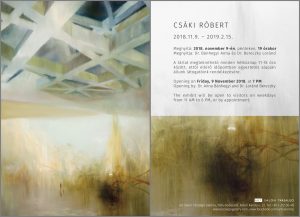
Barna Imre Balázs / coming soon
We are organizing the solo show of Barna Imre Balázs painter, and hopefully we will present the first monographs of the artist.
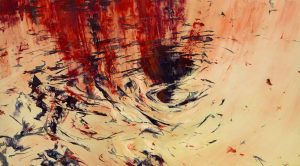
In The Focus
We say goodbye to our exhibition Perceptions 3.-evolution- with “Blue Room” by Ákos Esse Bánki. The greatest honour of the large canvas is its movement, owing to the playfulness of the perspective. We can see a room dreamed in blue, its parts were demolished by the artist’s fantasy, to rebuild it with constructive elements. The objects appear with scetchy lines, just as the planes of the space. These drawn objects seem extentionless. Also these lines are not just drwing forms, but also determine the experience of the perspective, they are leading are eyes mainly into the center of the picture. This is the point where the painting thickens, and the point where the two parts of the artwork separate, which is a hardly noticable, but an important momentum. In experiancing the perspectivity of space the variety of colours have a great role, especially the streaming of paint by the lines, and the dark shades of blue. Ákos Esse Bánki treats the theme of the exhibition, evolution, in a special way, he takes it as a personal, inner process. We can observe the development of the picture and its phases on his cavas “Blue Room”, from interpreting the physical world to effacing the paint.
written by: Zsófi Máté
photo: misi
Ákos Esse Bánki: Blue Room (130×340 cm, oil on canvas, 2015)
In The Focus
György Szabó, Munkácsy-prize winner sculptor is featuring Perceptions 3. -evolutio- with four artworks. I consider „The magician’s house” as starting point, because it’s forms and motives are maintained by the other exhibited works, „Tumbleweed”, „Sunkey”, and „Origin” too. „The magician’s house” gives a mythical experience of space and time. The buliding-like scpulture is build from irregular geometrical forms and constructive elements. It is not held together by physical disciples, but an inner, not wordly logic. Movement of the surface happens not just because of the technique, but also and mostly because of the shapes, hollows, various materiality here. This is also perceptible on „Tumbleweed”, on which the contructive forms are in constant motion, making for the sculpture’s inside, empty pole. This emptiness, hiatus is turned into sculptural space by György Szabó in the case of „Origin” The regular orb’s surface is covered with symbols in a repetitive rythm, which expands the artwork, as if the symbols were emanating from the centre’s empty space. Next to „Origin” stands an other piece of The „Magical orb” series, the luminary-like „Sunkey”. The motives on the raw, illuminating surface of the artwork are like a map to an imaginary galaxy. All these sculptures belong to the same magical universe, and György Szabó is the magician, who keeps every secret symbol and hidden space in motion.
written by: Zsófi Máté
photo: misi
In The Focus
„In Quarantine” by Mózes Incze was made for the thematic exhibition, Perceptions 3 – evolitio – . The artwork reflects on the roots of the human race, and on the close relationship between human and animal. On the picture there is a chimpanzee, who’s sitting comfortabely in an armchair with srtaight back. His attitude emphasizes his human strains. This could be the reason why he looks threatening to us. In researching the process of evolution, there is always the demand, to alienate ourselves from our animal progenitors. Our state of development rests on the differences, we separate ourselves from the class of monkeys. This portray of a chimpanzee by Mózes Incze obliterates thos differences. The painter sets the animal in the middle of the picture, as if it was a repesentative specimen to unveile the human race. He even surrounds it with a typical motive of his painting, a band. So the monkey is not in a cage, but it is under lock and key. From the dark background hands are leaning to the animal, wearing a pair of green gloves. The key of „In Quarantine” is how we describe the relationship between the monkey and the gloves. My interpretation calls the great philosopher, Walter Benjamin as help. According to him, touching an animal is a dangerous thing, because we can recognize ourselves in them. We have to keep our caveman-selves in secret, hide it, for example with a pair of gloves, which keep us out of touch with animals. But what if this gloves are made of leather? Aren’t we wearing a piece of what we want to desperately be released? On the left side of „In Quarantine” there is a little locked box. From this detail the whole painting can be interpreted as a box, that we use to hide, quarantine our caveman-selves. But is this something to be ashamed of? How does the whole problem look like in the opinion of an animal? The monkey of the painting may would use Nietzsche’s words: „An animal which could speak said: Humanity is a prejudice of which we animals at least are free.”
written by: Zsófi Máté
photo: misi
Mózes Incze: In Quarantine (100×110 cm, oil on canvas, 2015)
In The Focus
In „Parallel Lights” series by Tamás Hencze bright colors are playing an important role. Rousing yellows and blues are getting unusually large space on the pictures. I’ve choosen „Parallel Lights XVII” to write about, which is operating instead of these colors with black, grey and white. „Parallel Lights XVII” is closen to itself, identical to itself, both as a picture and as philosophy. The grey and black bands of the frame-like formation wake the sense of symmetry, which is only thickend by the gestures leaning to eachother. Behind these colors are shining the white lights, tending on a regular path, then breaking in the space beyond the formation. They do not pass the borders of the painting, the fund and the end is the artwork itself. Tamás Hencze likes emptiness. Gives a form, a rythm for emptiness. He’s ordering it in the middle of „Paralell Lights XVII”. This bare whiteness has no space or body, though it fills u pour eyes. Looking at this painting by Hencze is like when we’re staring in the blindening Sun, and for a moment we can only see empty, white light, with vibrating colorful forms.
photo: Art.Salon : Társalgó Galéria (misi)
written by: Zsófi Máté
Parallel Lights XVII. (150x100cm, oil on canvas, 2014)
In The Focus
„Time Capsule” by Attila Rajcsók was exhibited in Paris for the first time, and it continues the form world of the artist’s eariler works. For Rajcsók it is very important to demolish, rebuild and interpret the organic forms on the base of the elements of nature. That way the artist and the viewer also have the possibility to look into the inner structure of natural harmony. „Time Capsule” is following this disciple, but despite recreating nature, abstraction is in the foreground, making the artwork futuristic, alienated from real space and time. Its unique structure is due to streaking of the steel straps, because while the sculpture is in course of construction, the inchoate form is transforming, which is terminating with the loop-like connection of the straps. Though the scuplture is terminated only in a material meaning. The artwork by Attila Rajcsók has on one hand an exciting, open inner space. The outside sterile, raw steel gets here the colour of red, which results some kind of an inner ignition, an almost touchable tension, as if the scuplure could turn outside itself in any moment. On the other hand, it is an open arwork, because it is using the viewer’s fantasy, motivatates them to move and shape the sculpture. This sense is only amplified by the position of the artwork. It is almost levitating, barely touching the postament, seems like the temporary balance could capsize anytime. But all this quasi-eventuality is the part of a well planned conception. „Time Capsule” has an incerdible space oranizing power, but the real professional success, is that Attila Rajcsók is building into the constuction all the invisible forms and spaces, which are brought to life by the power of mind.
photo: Mihály Borsos (misi)
written by: Zsófi Máté
Time Capsule (143x84x85 cm, painted, welded steel, 2015)

